
At Apple’s first-ever evening special event on October 30 dubbed “Scary Fast,” the company proudly announced its new M3 chips. For the first time ever, an entire generation of Apple silicon for Mac was announced at once: the base M3, M3 Pro, and M3 Max. We expect there will be an M3 Ultra coming in a Mac Studio update in 2024, but the “Ultra” chip is literally two “Max” chips together in a multi-die package, so there won’t be many surprises there.
Here are the critical details on the M3, M3 Pro, and M3 Max as announced by Apple. Any performance claims are Apple’s alone and need to be verified with independent testing, which we’ll be doing soon.
M3 processors compared
Want to know the top-level differences between these chips at a glance? This is the table for you!
| Processor | CPU cores | GPU cores | Neural Engine cores | Memory |
|---|---|---|---|---|
| M3 | 8 (4P + 4E) | 8 or 10 | 16 | 8-24GB |
| M3 Pro | 11 (5P + 6E) or 12 (6P + 6E) | 14 or 18 | 16 | 18-36GB |
| M3 Max | 14 (10P or 4E) or 16 (12P + 4E) | 30 or 40 | 16 | 36-128GB |
CPU and GPU improvements across the M3 line
The entire family of M3 processors is built on a 3nm manufacturing process and appears to be built on the same architecture as the A17 Pro (at least for the GPU and media engine).
In the CPU, the high-performance cores are about 15 percent faster than those in the M2, and 30 percent faster than those in the M1. The efficiency cores have been upgraded even more, and are 30 percent faster than the M2’s efficiency cores and 50 percent faster than those on the M1.
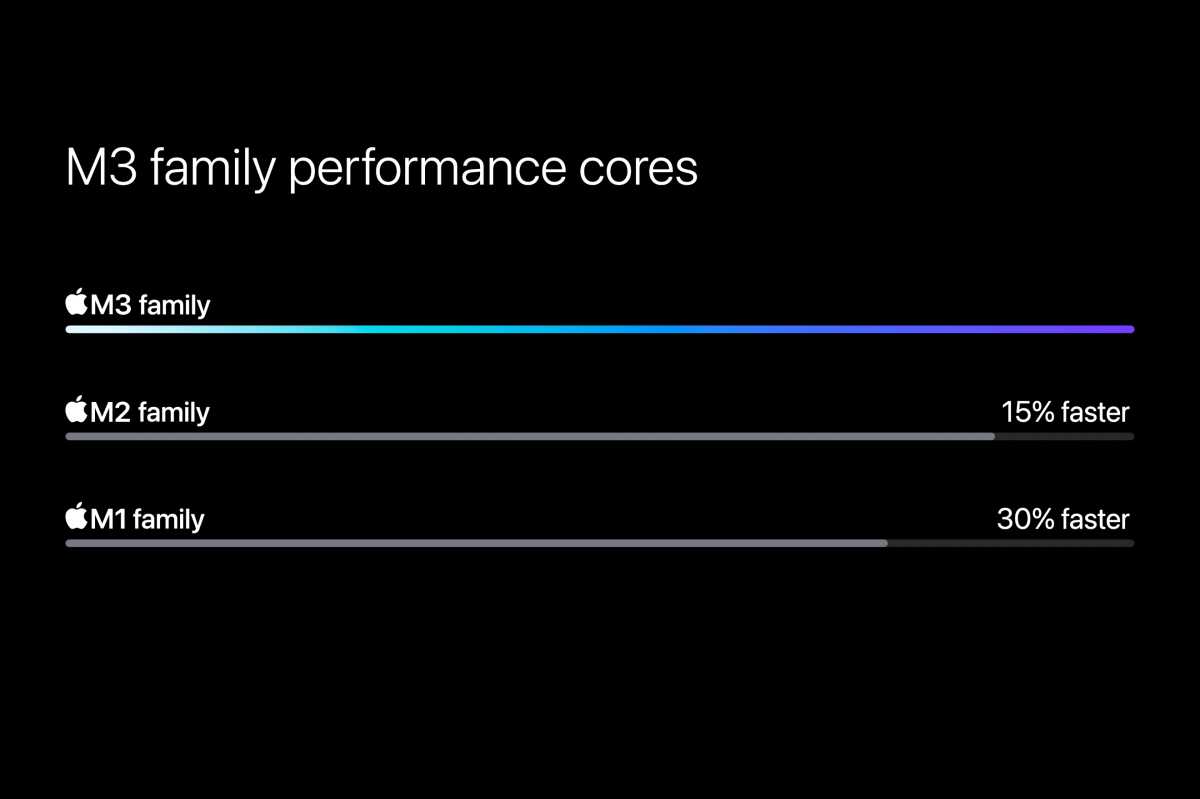
Apple
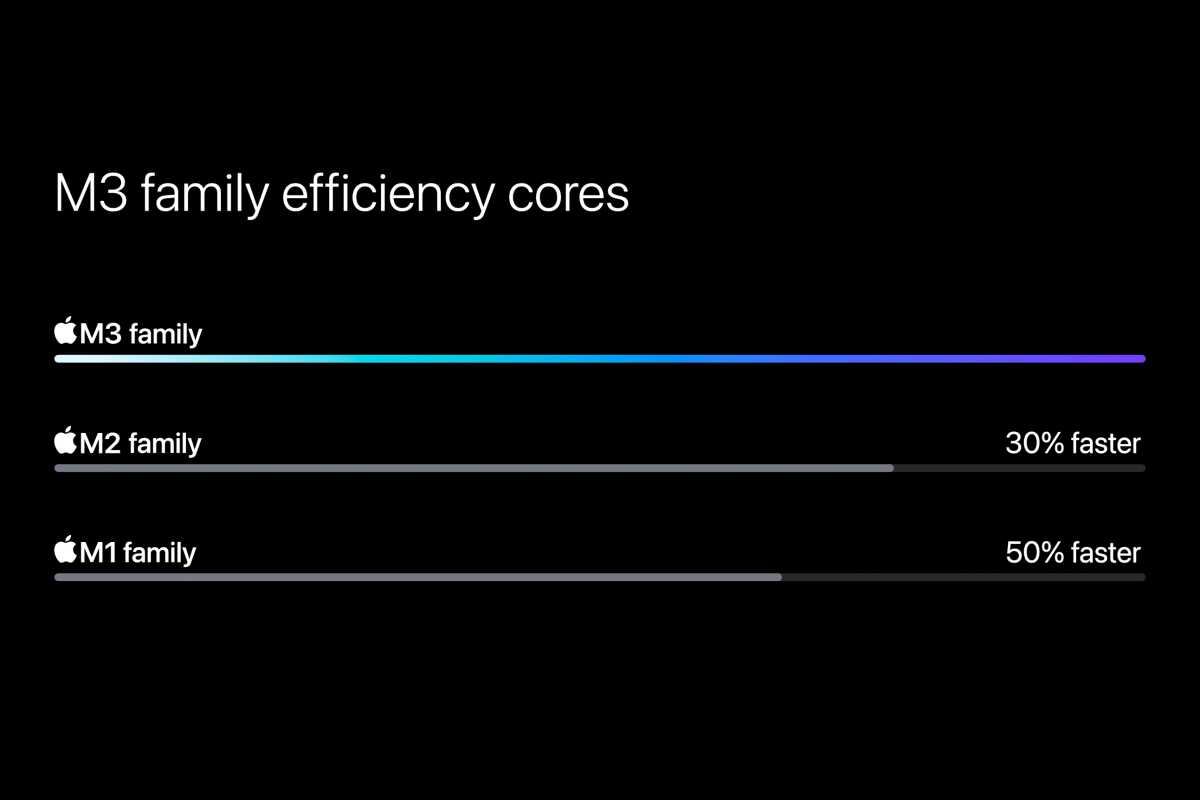
Apple
The GPU gets a bigger boost than the CPU, with an architecture similar to that in the A17 Pro found in the iPhone 15 Pro. A new industry-first “dynamic caching” technology allows hardware to manage the amount of RAM reserved for the GPU continuously, instead of applications determining the amount when they’re compiled. The GPU also supports mesh shaders and hardware ray tracing acceleration. Apple says it’s up to 2.5x faster than the M1 in pro rendering applications.
The media engine supports the same codecs as the A17, including H.264, HEVC, ProRes ProRAW, and AV1 decode.
The Neural Engine, which is dedicated hardware to accelerate AI and Machine Learning tasks, gets a bit of a boost in the M3 generation. There was a huge performance leap from M1 to M2, but a smaller one going from M2 to the new M3 chips. Apple says it’s 15 percent faster than the Neural Engine in the M2, but 60 percent faster than that of the M1.
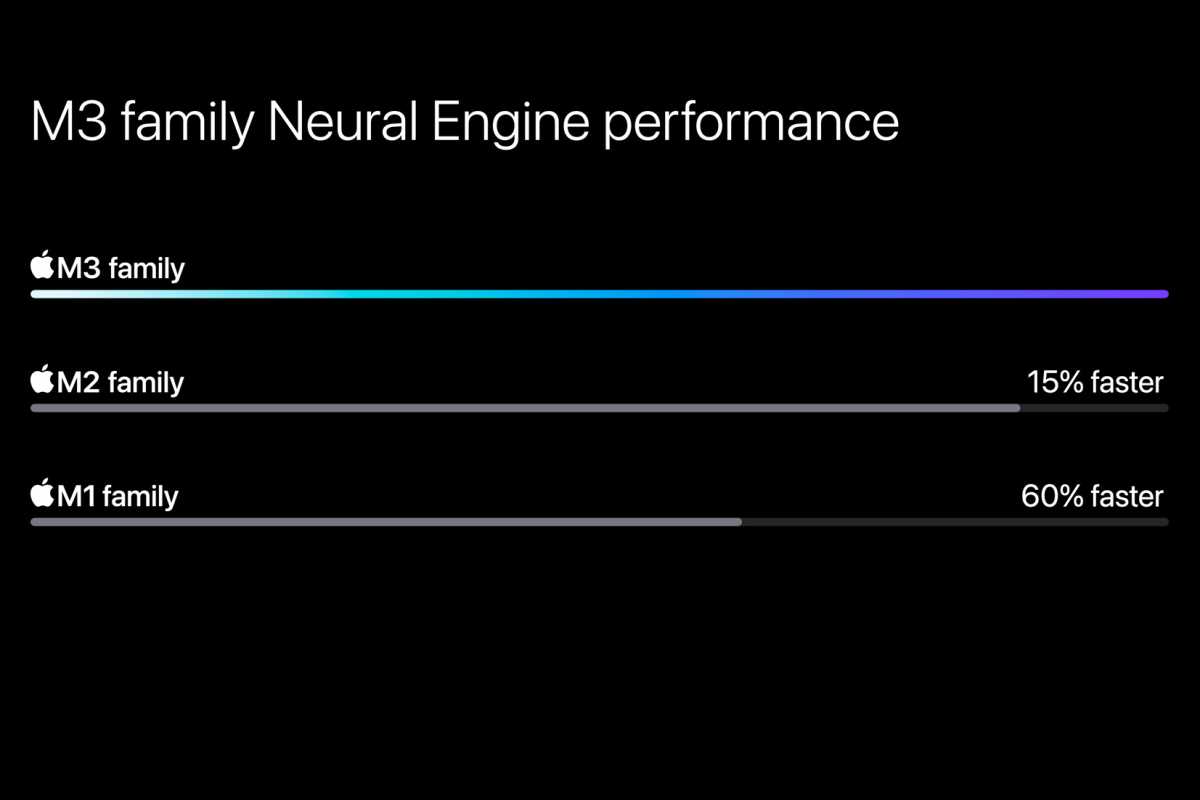
Apple
M3 specs
The M3 will have an 8-core CPU, with four performance cores and four efficiency cores, and an “up to” 10-core GPU (the base level iMac ships with an 8-core GPU but all of the M3 MacBook Pro models have 10-core GPUs). M3 systems will also now be available with up to 24GB of RAM.
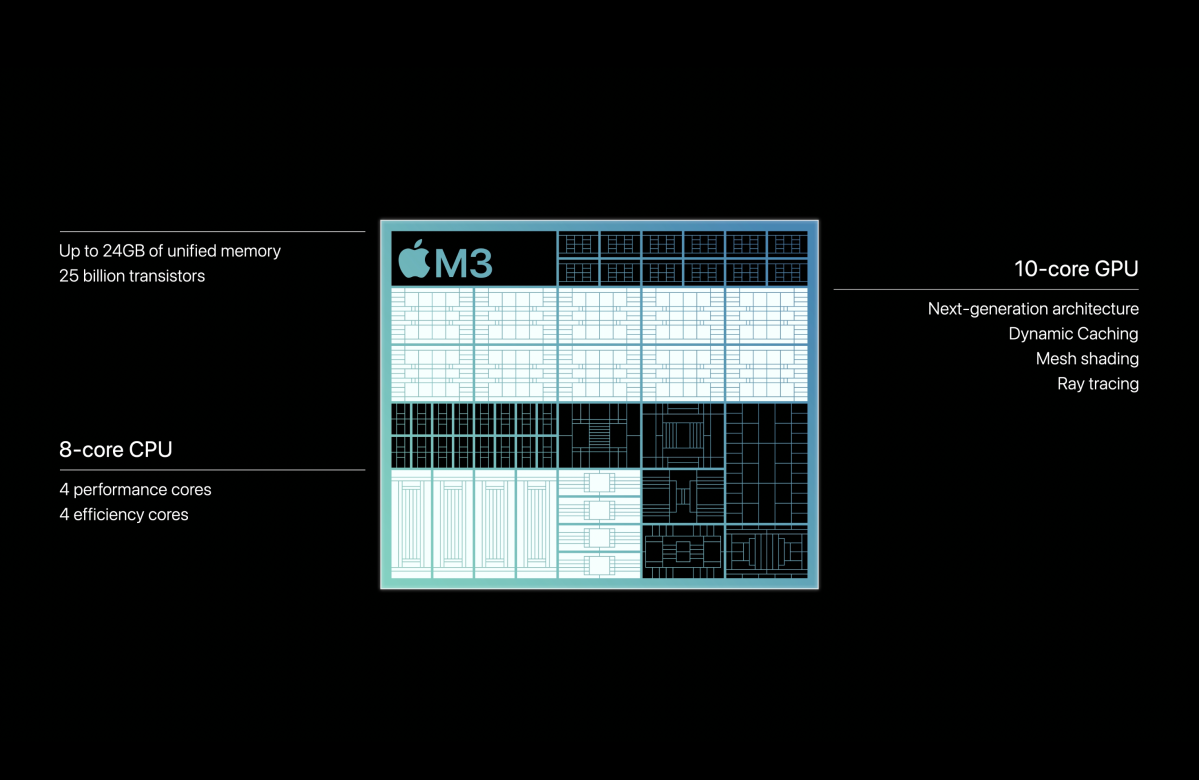
Apple
M3 Pro specs
The M3 Pro boosts the CPU with an additional two efficiency cores but removes two performance cores relative to the M2 Pro, giving it a 6+6 configuration. This is an interesting change from the M2 Pro, which had 8 performance cores and 4 efficiency cores.
The GPU will feature up to 18 cores, one fewer than the M2 Pro, though Apple says you can expect it to be 10% faster than the M2 Pro’s GPU and 40 percent faster than the M1 Pro’s GPU.
M3 Pro chips will support up to 36GB of RAM, a small boost from the 32GB maximum of M2 Pro.
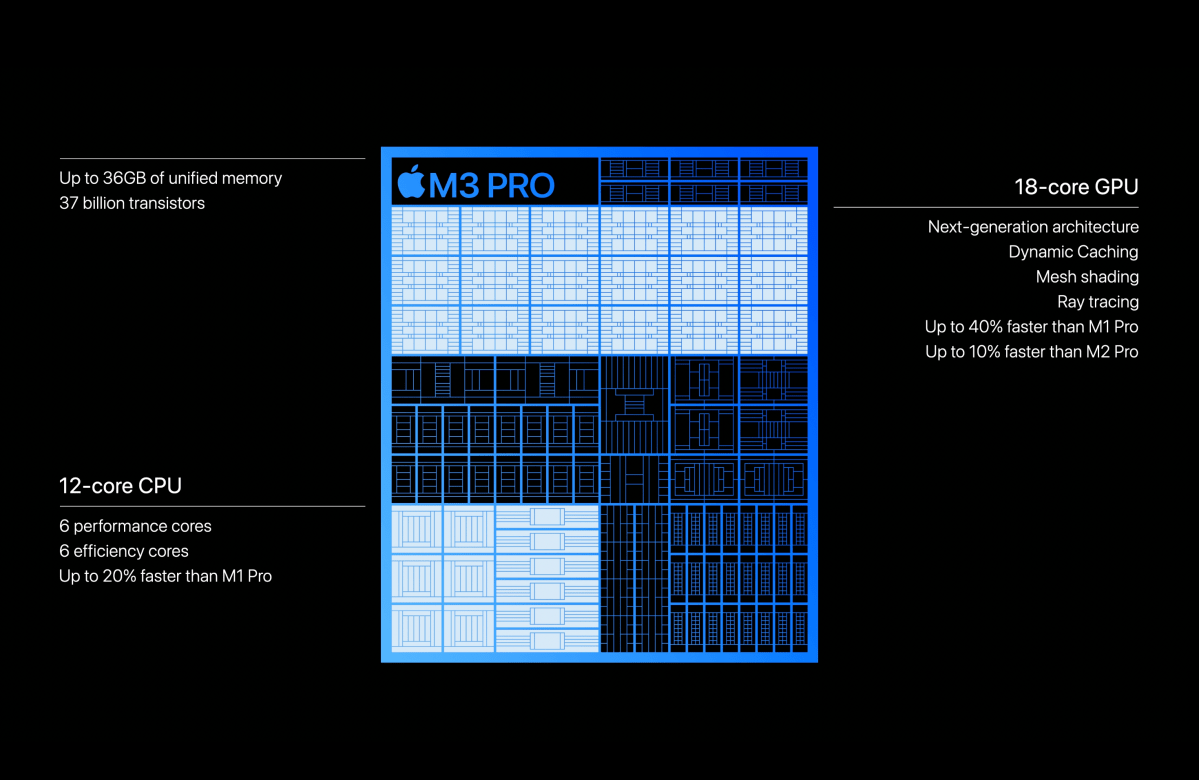
Apple
M3 Max specs
The big chip is the M3 Max. It includes 16 CPU cores: 4 efficiency cores and 12 performance cores.
The GPU features up to 40 cores, two more than the M2 Max.
M3 Max chips support up to 128GB of RAM, a big step up from the 96GB maximum of M2 Max.
Coming to multiple Macs this fall
The M3 line will debut in a number of new Mac updates shipping in November. New 14-inch and 16-inch MacBook Pro models are available for preorder now and ship beginning on November 7. For the first time, you’ll be able to get a base M3 in a MacBook Pro (but only the 14-inch model).
Apple is also updating the 24-inch iMac with the M3 processor, which is also available to order now and will ship starting November 7.






